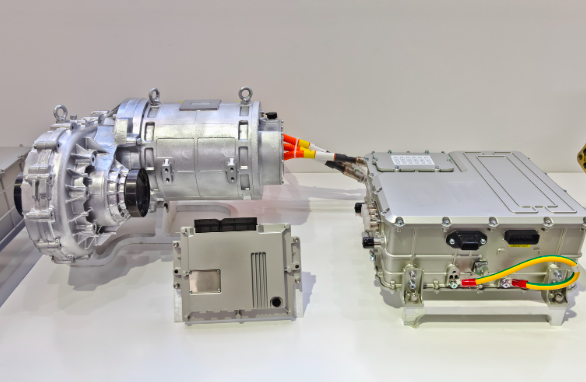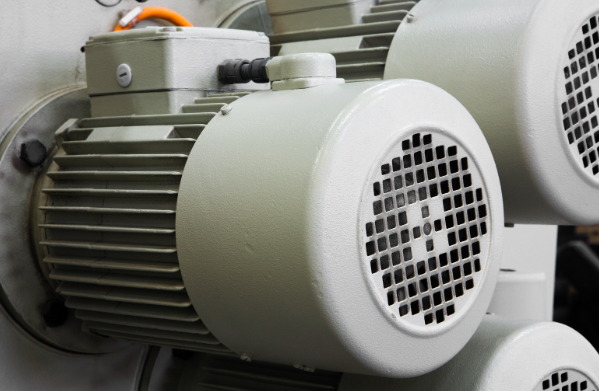Last Updated on November 25, 2022 by mdmtool
There are several types of electric motors, each with unique characteristics. The most common types are synchronous motors and induction motors. Both have advantages and disadvantages, so it’s essential to understand the difference between them before choosing the right one for your needs.
What Is A Synchronous Motor?

A synchronous motor is a device that converts electrical energy into mechanical energy. The conversion of energy takes place through the interaction of magnetic fields. The construction of a synchronous motor is very similar to that of an induction motor.
What Is An Induction Motor?

An induction motor is an AC electric motor in which the electric current in the rotor needed to produce torque is obtained by electromagnetic induction from the magnetic field of the stator winding. The rotor can be either wound type or squirrel-cage type.
What Is The Difference Between Synchronous And Induction Motors?

- Rotor: The main difference between synchronous and induction motors is that the former has a rotor with permanent magnets, whereas the latter has a rotor with electromagnets.
- Cost: Synchronous motors are more expensive than induction motors. They are also more efficient and have a better power factor.
- Speed: The speed of synchronous motors can be controlled by changing the field current. On the other hand, induction motors are more rugged and require less maintenance.
- Uses: Synchronous motors are used in applications where speed control is required, such as in electric clocks, turntables, tape drives, etc. They are also used in large AC generators. Induction motors are used in industrial applications such as pumps, fans, compressors, etc.
- Applications: Synchronous motors are used in applications where speed control is required, such as in electric clocks, turntables, tape drives, etc. They are also used in large AC generators. Induction motors are used in industrial applications such as pumps, fans, compressors, etc.
- Properties: Synchronous motors are more expensive than induction motors. They are also more efficient and have a better power factor.
- Construction: Synchronous motors have a stator, which is the stationary part of the motor, and a rotor, which is the rotating part. The stator has winding coils that create a magnetic field. The rotor has permanent magnets or electromagnets that interact with the stator’s magnetic field to produce torque, which causes the rotor to turn.
Advantages Of Induction Motors

Induction motors have several advantages over other types of electric motors. They are:
- They are more rugged and durable than other electric motors, making them ideal for heavy-duty industrial applications.
- Induction motors are more efficient than other electric motors, resulting in lower operating costs.
- Induction motors are self-starting, meaning they do not require an external power source to start them.
- Induction motors are relatively easy to maintain and repair.
- These motors can operate in wet and dry environments.
Disadvantages Of Induction Motors
Although induction motors have many advantages, they also have some disadvantages. These include:
- Induction motors are not as efficient as synchronous motors, meaning they consume more energy and cost more to operate.
- Induction motors are not as powerful as synchronous motors . They are unsuitable for applications requiring high levels of power.
- Induction motors are more complex than other electric motors, making them more expensive to manufacture.
- Induction motors are less efficient than brushed DC motors at low speeds, making them less suitable for precise speed control applications.
What Are The Types Of Synchronous Motors?
The three types of synchronous motors are:
- Salient Pole: The rotating field is produced by poles that project from the stator into the rotor’s air gap. These motors are used for large loads such as compressors, pumps, Fans, Mills, etc.
- Cylindrical Rotor: The rotating field is produced by conductors embedded in the surface of the cylindrical rotor. These motors are used for smaller loads, such as office equipment, clocks, etc.
- Hollow Cylindrical Rotor: The rotating field is produced by a conductor winding supported by an inner frame and located in the air gap between the stator and outer frame. These motors are used for large loads, such as generators in hydroelectric power plants.
Types Of Induction Motor
There are two types of induction motors:
- Squirrel Cage Induction Motor: It is the most common type of induction motor. In this type, the rotor consists of a cylinder of steel laminations with Aluminum or Copper bars embedded in it. The conductors are short-circuited.
- Slip Ring Induction Motor: It has a rotating set of insulated windings called slip rings on the shaft. The external current supply is given to the rotor through these slip rings. Therefore, it can develop high starting torque.
How Do Synchronous Motors Work?
The working of a synchronous motor is based on the principle of electromagnetic induction. When an electric current is passed through the stator winding, it produces a magnetic field. This magnetic field interacts with the magnetic field of the permanent magnets on the rotor.
How Do Induction Motors Work?
An induction motor is an AC electric motor in which current in the rotor (the rotating part of the motor) is induced by the magnetic field of the stator (the stationary part of the motor). The stator contains coils of conductors, which create a magnetic field. The rotor also includes coils of the conductor, which are exposed to the stator’s magnetic field. When current flows through the rotor coils, they are magnetized and interact with the stator’s magnetic field. This interaction creates torque, which causes the rotor to rotate.
FAQs
What is the application of 3-Phase Induction Motors?
3-phase induction motors are used in various applications, from small household appliances to large industrial machinery. They are commonly used in pumps, fans, compressors, and conveyors.
Conclusion
The main difference between a synchronous motor and an induction motor is that the synchronous motor rotates at a constant speed even if the load changes, while an induction motor’s speed changes with the load. Also, a synchronous motor has a DC excitation, while an induction motor has an AC excitation. Even though both motors have their pros and cons, the synchronous motor is more efficient than an induction motor.





